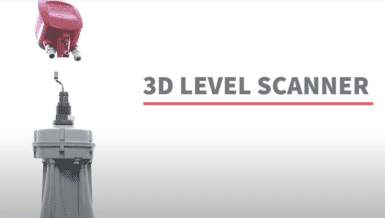Once an ignition source reaches a dust cloud in an unprotected silo, the deflagration’s pressure will challenge the strength of the vessel, causing it to deform or even fail. Flames and pressure will also propagate through the silo’s inlets and outlets and into other areas of the production process, resulting in a chain reaction of secondary explosions.
To protect the vessel from the initial deflagration, explosion vent panels are often installed near the top of the storage silo to quickly relieve the pressure from the explosion. Explosion isolation is also required to protect upstream and downstream processes from the propagating flames.
It’s common for explosion protection providers to recommend isolating a silo’s filling chute with a chemical islaotion system, oftentimes consisting of multiple bottles. A chemical isolation system is considered an “active” explosion protection strategy, meaning it requires a detection and control system to activate the devices.
However, research conducted by the Fike Corporation team shows that protecting large-volume silos with chemical isolation presents a few challenges:
- Such large-vented volume explosions are long-duration events. If a chemical isolation bottle empties its contents within one second and the duration of the explosion exceeds the life of the chemical barrier, flames may still propagate into interconnected equipment.
- Explosions in large silos generate pressure at relatively low rates, meaning pressure detectors may be slow to activate connected isolation systems. Therefore, additional optical detection is required to identify the incipient stage of combustion.
To solve the unique problems faced by these unique applications, and ultimately to ensure the safety of employees, Fike has produced the Si-FAV (Silo Inlet Fast Acting Valve).
The Si-FAV is installed horizontally across the filling duct, up to 1250mm x 1400mm. Upon detection of an explosion, compressed nitrogen activates the piston, which closes the gate valve into a locked position within milliseconds before the pressure and flames reaches the filling chute.
While Fike doesn’t recommend relying solely on chemical isolation systems to protect inlets of large-volume silos, chemical isolation may be used in tandem with a gate valve to protect against low minimum energy ignition (MIE) dusts, whose explosions are often more difficult to isolate. These chemical isolation units are installed between the combustible material and gate valve to ensure no sparks or flames sneak through the small remaining gaps of a closed gate valve. In another scenario, chemical isolation in addition to a Si-FAV may be applied to ensure isolation while the valve is still closing.
Finally, due to its integrated pneumatic system, the Si-FAV can also be used as a process valve to shut off the silo after filling, making it a cost-effective solution for both production and explosion protection functions.










































